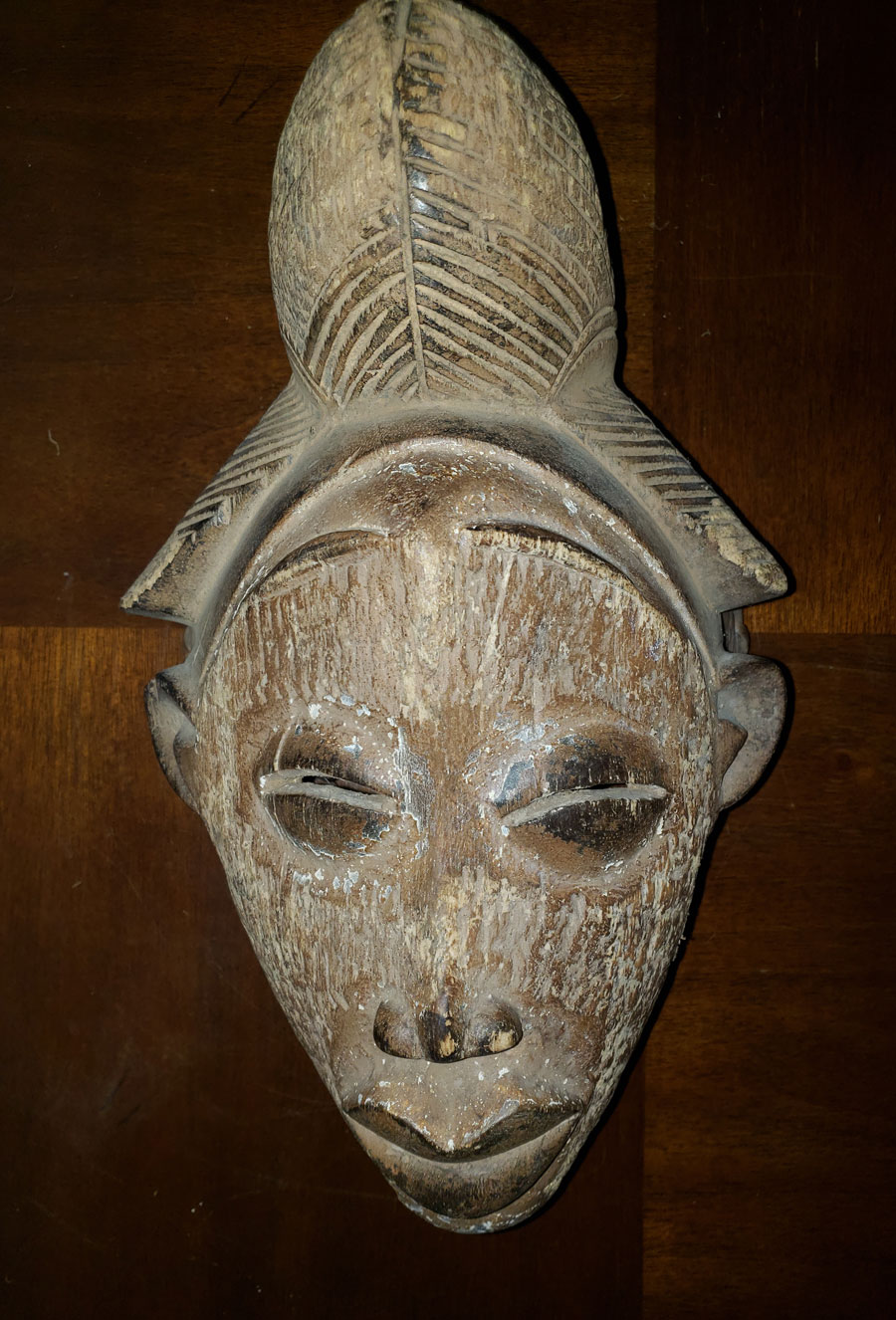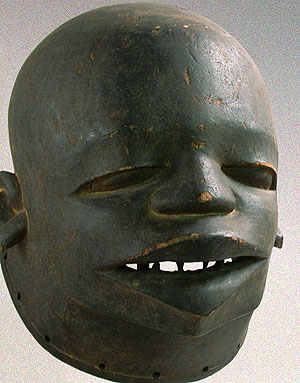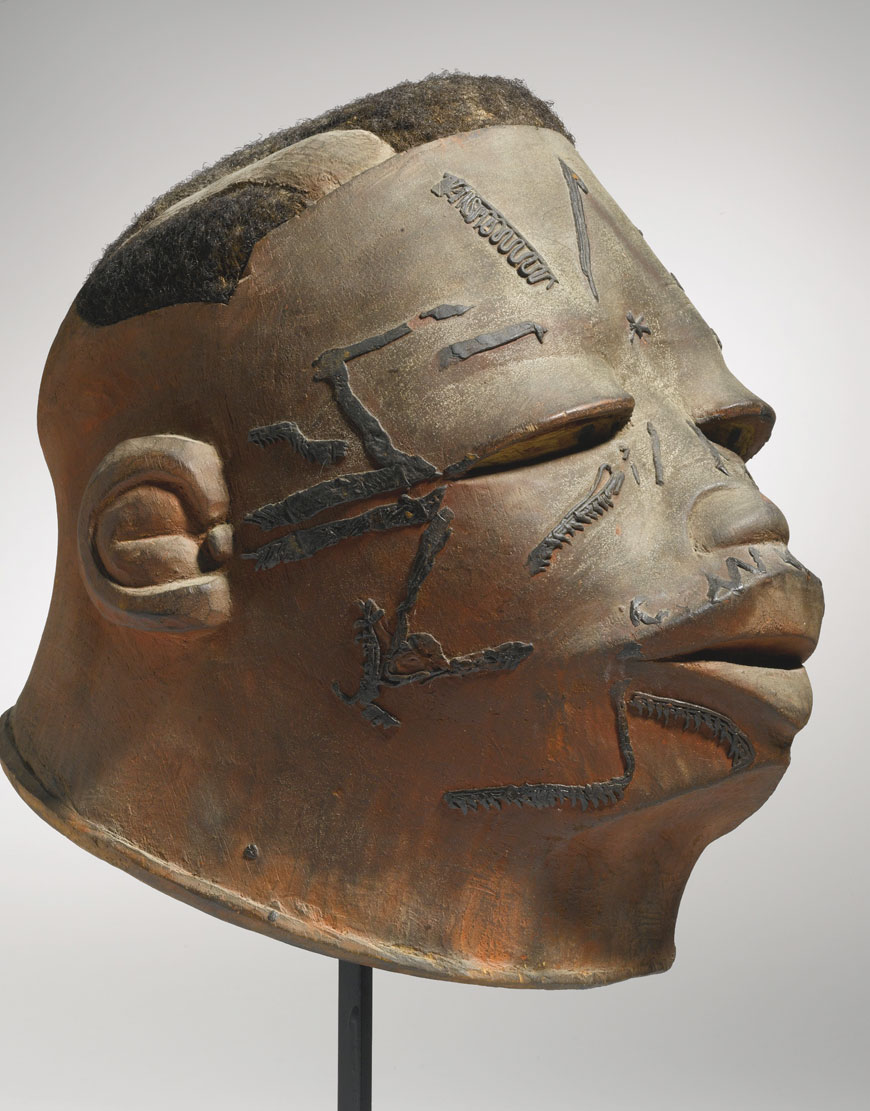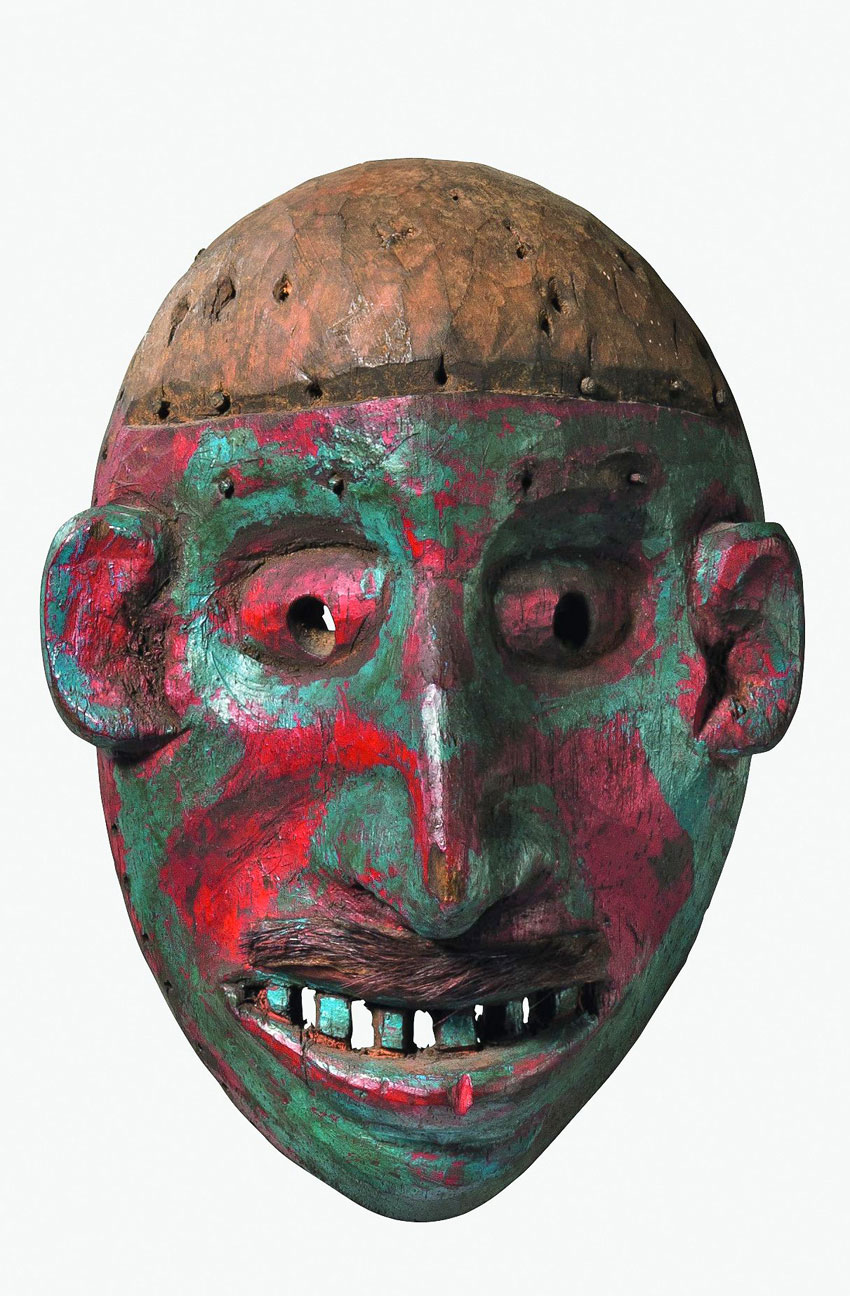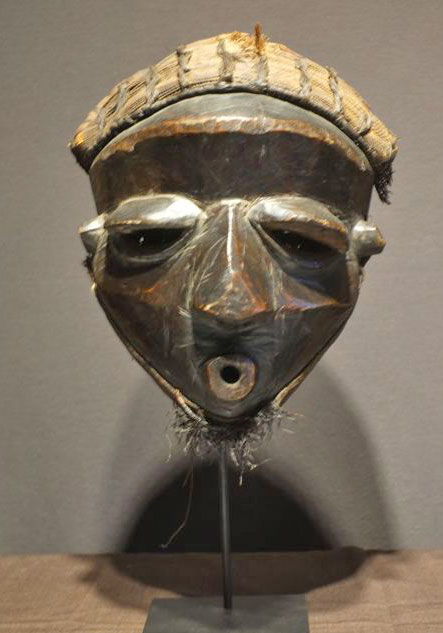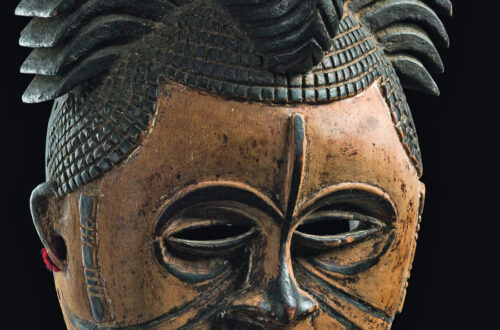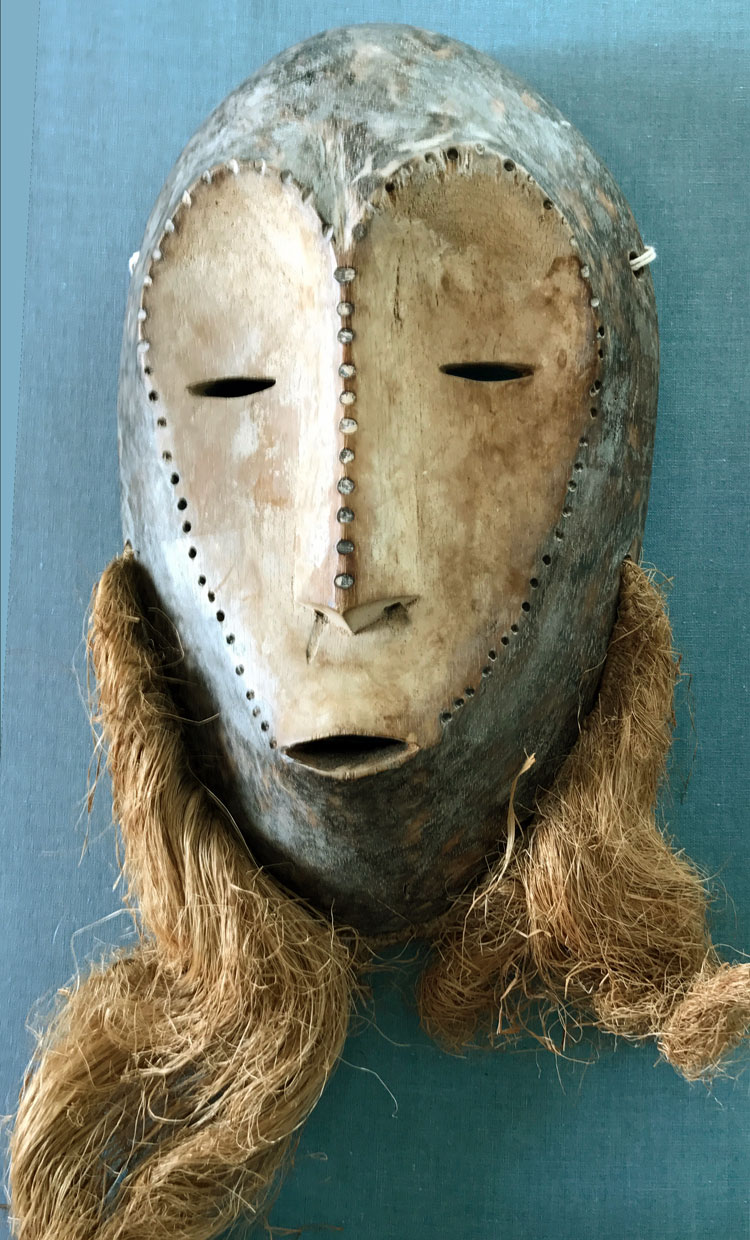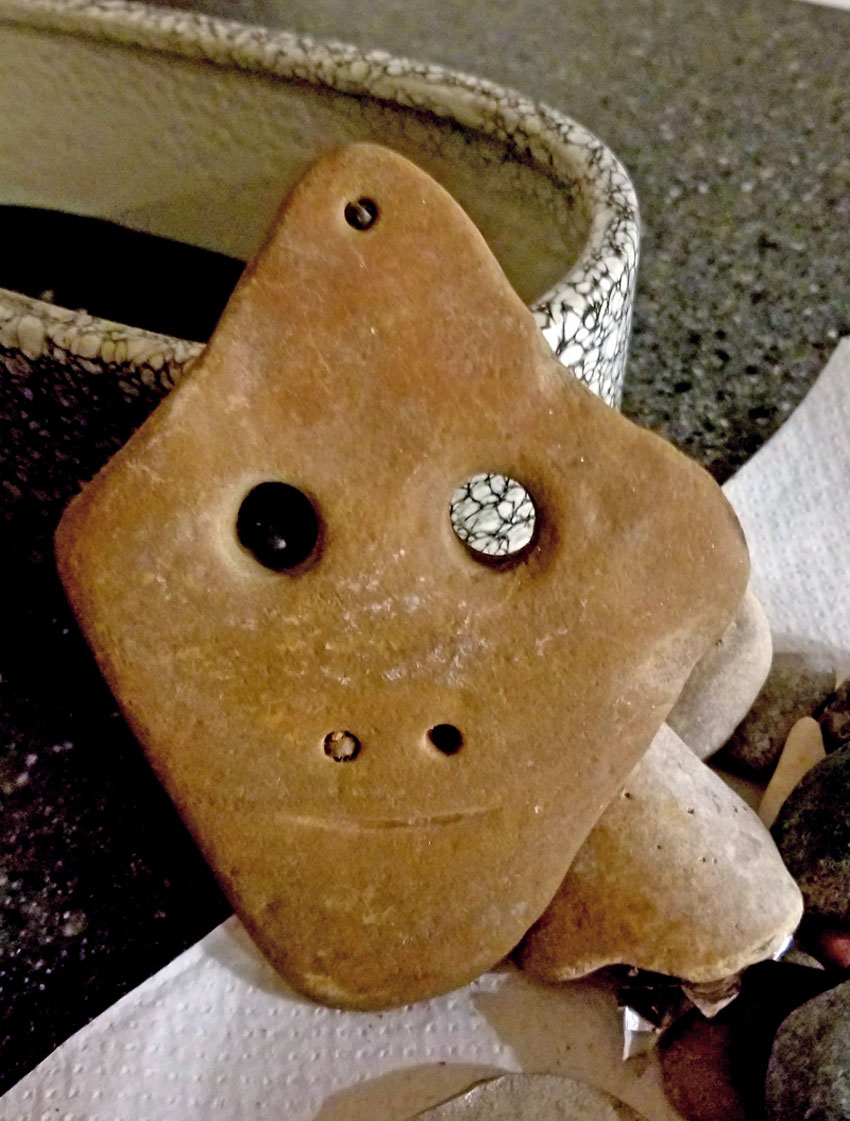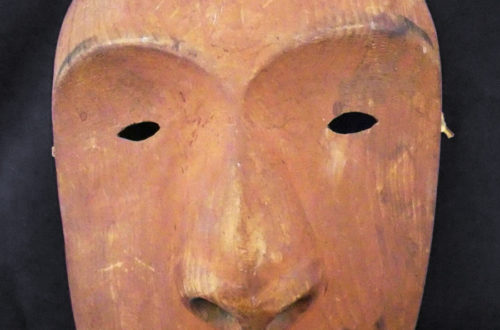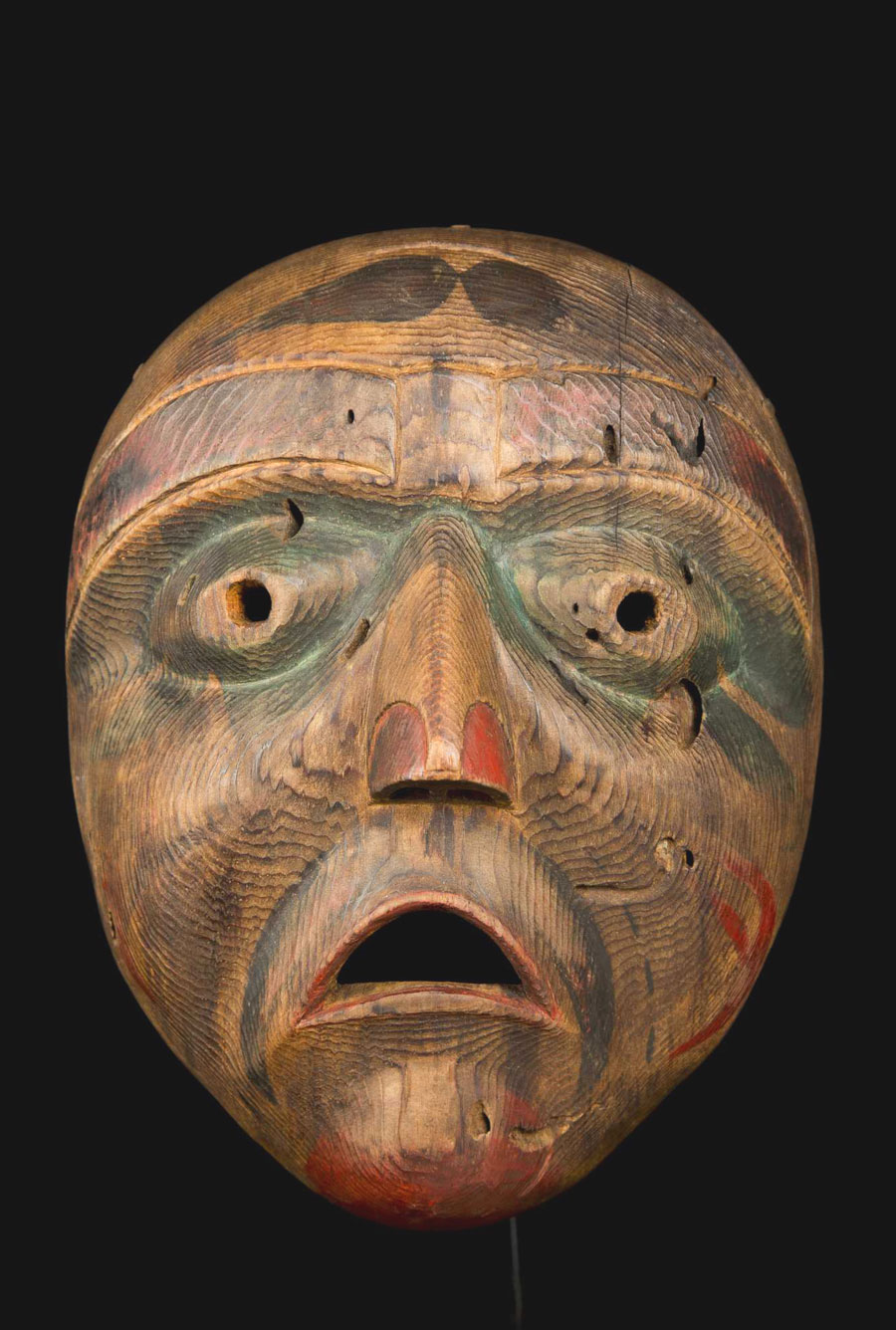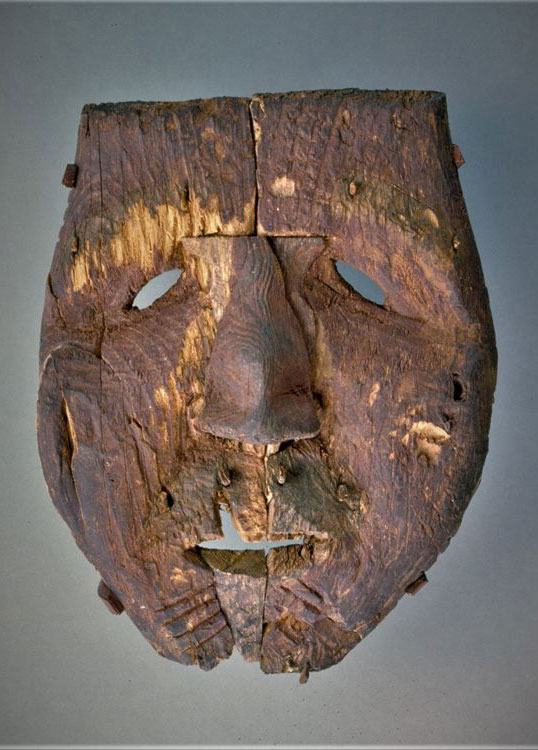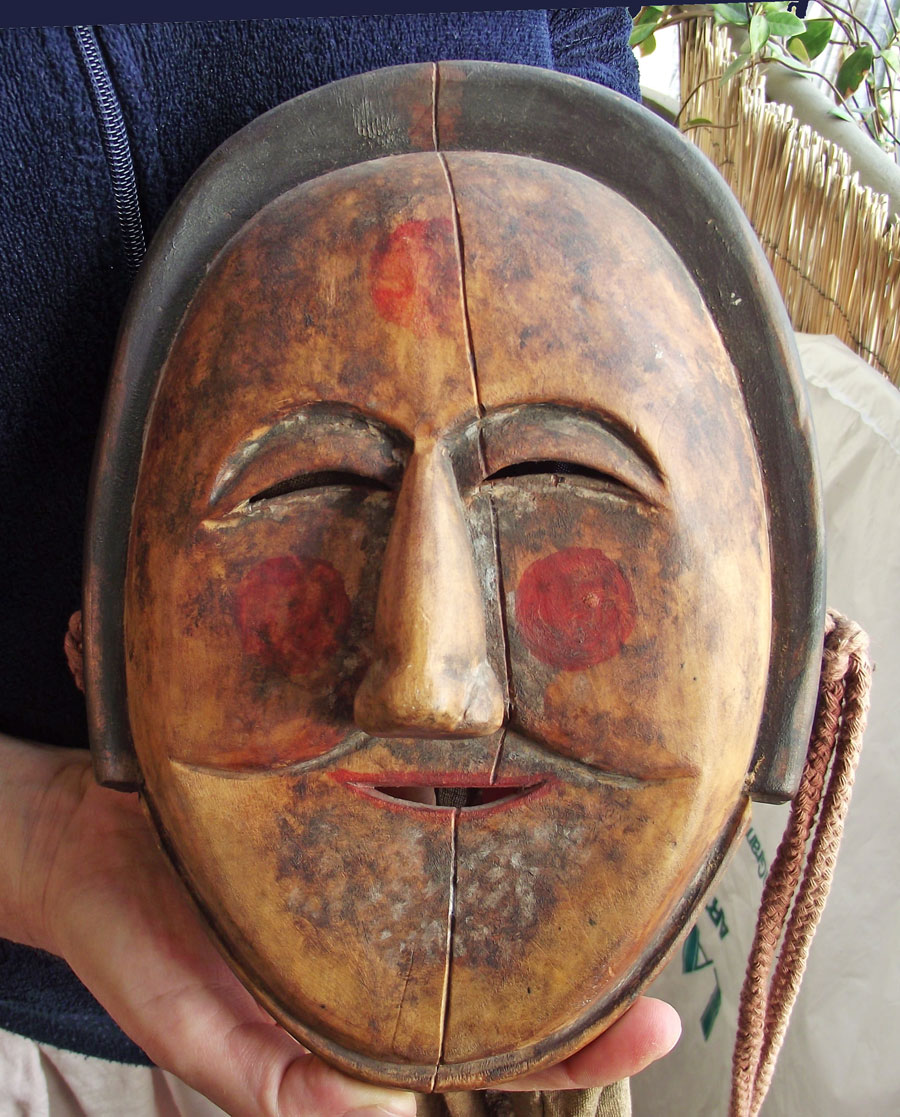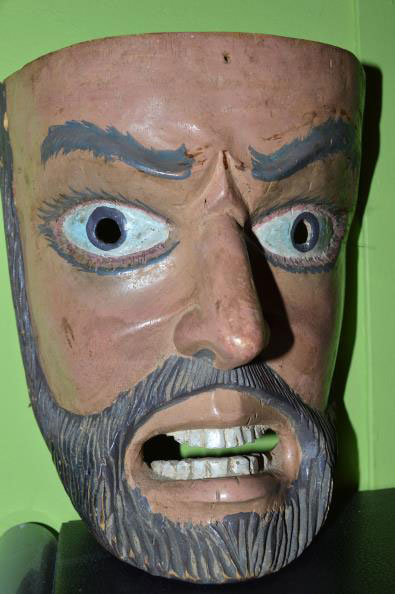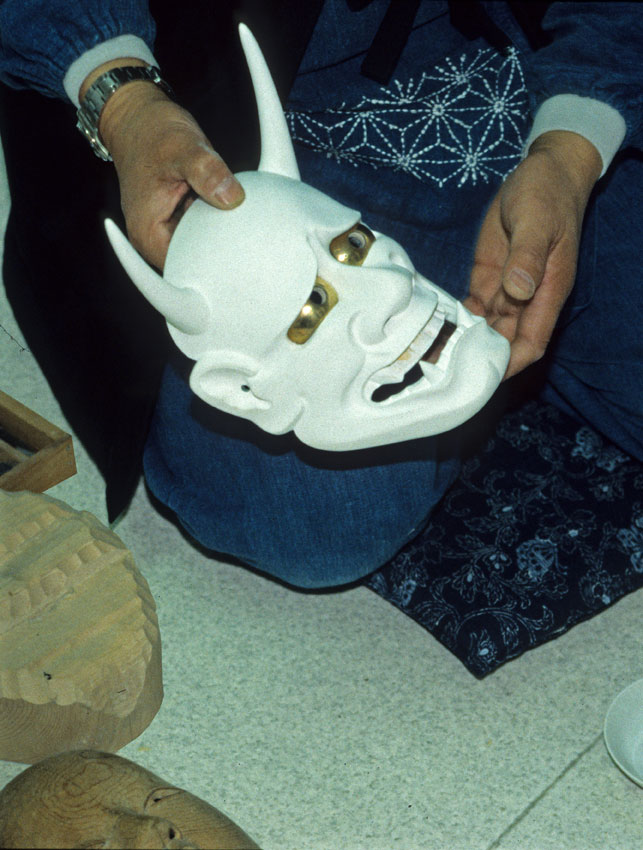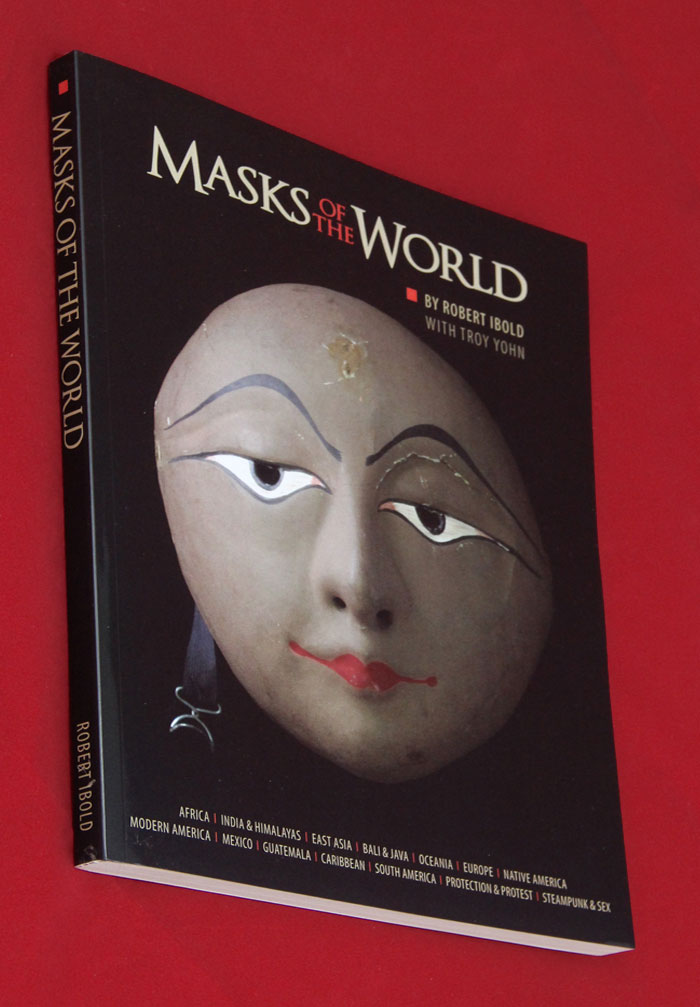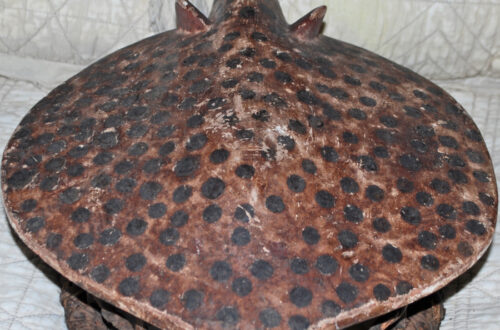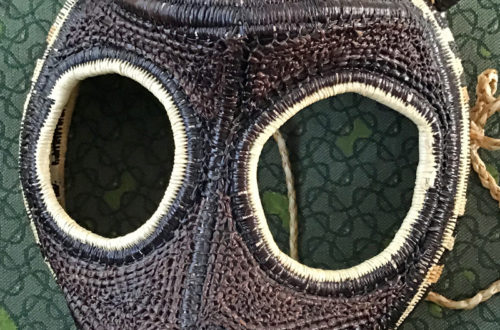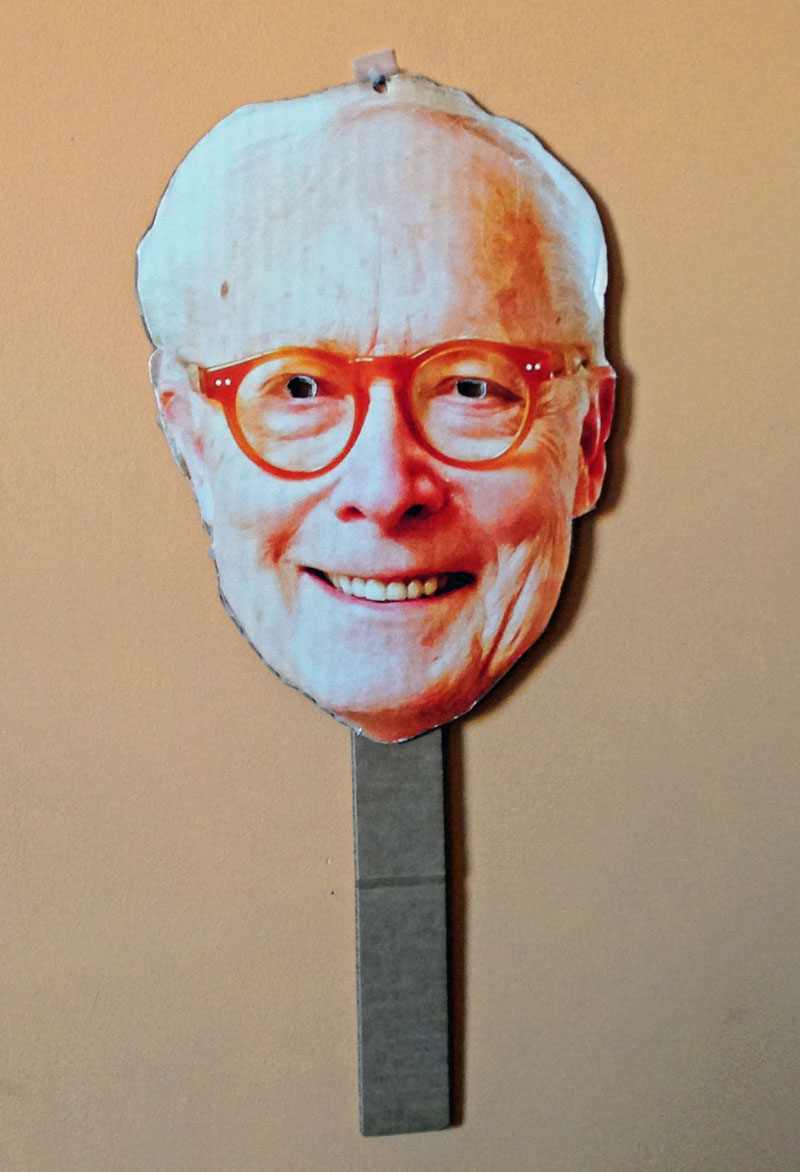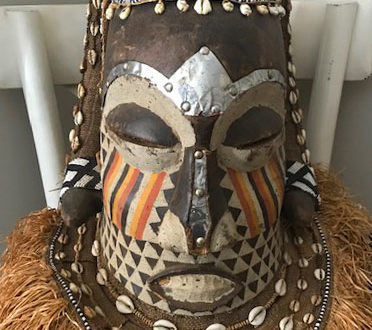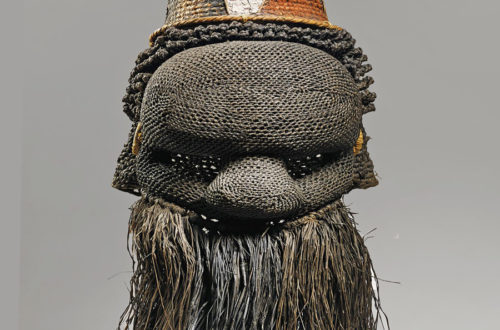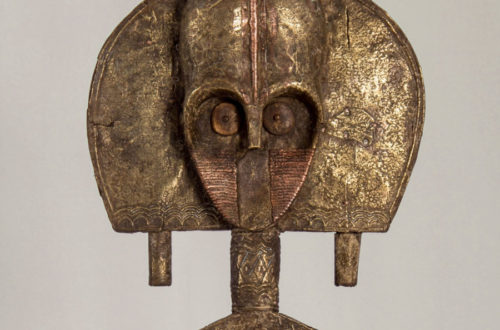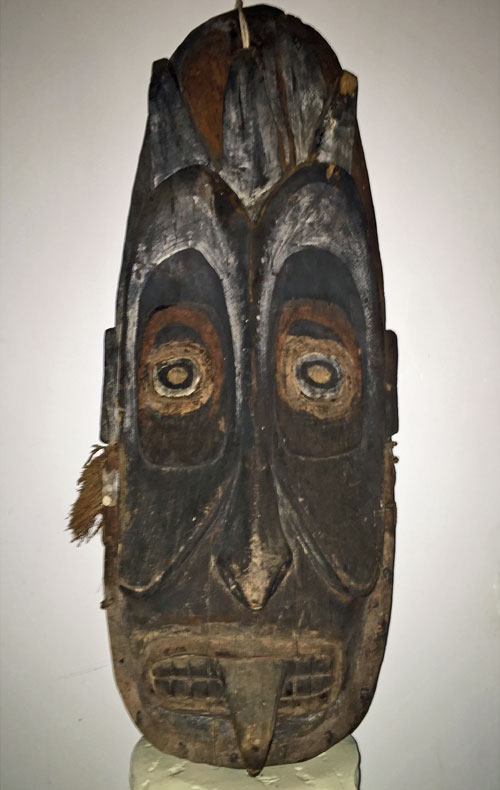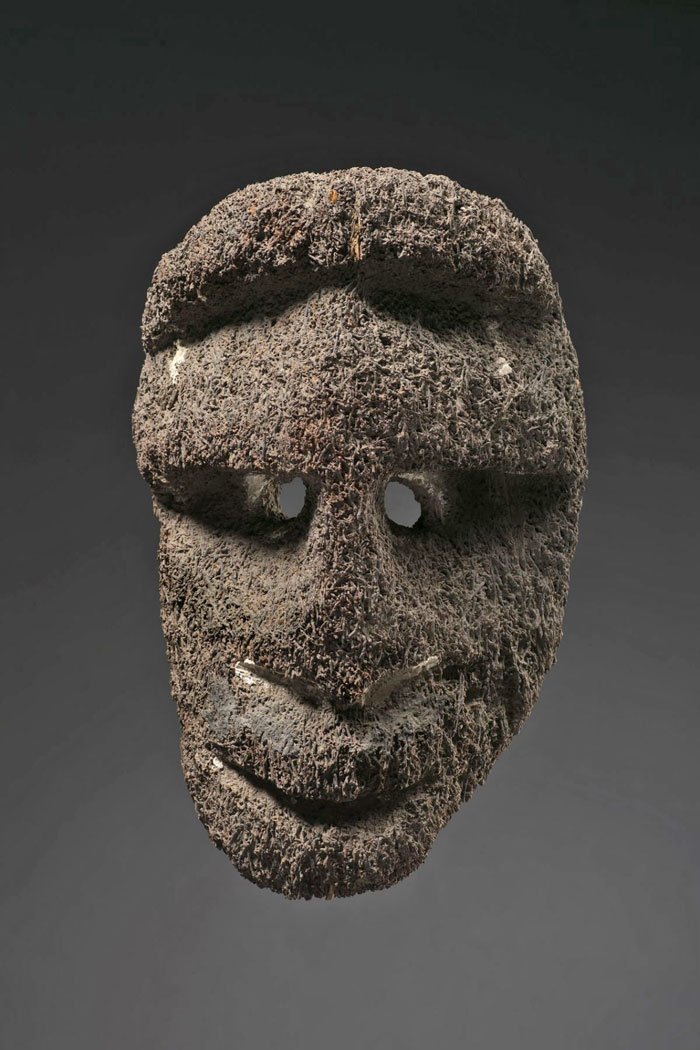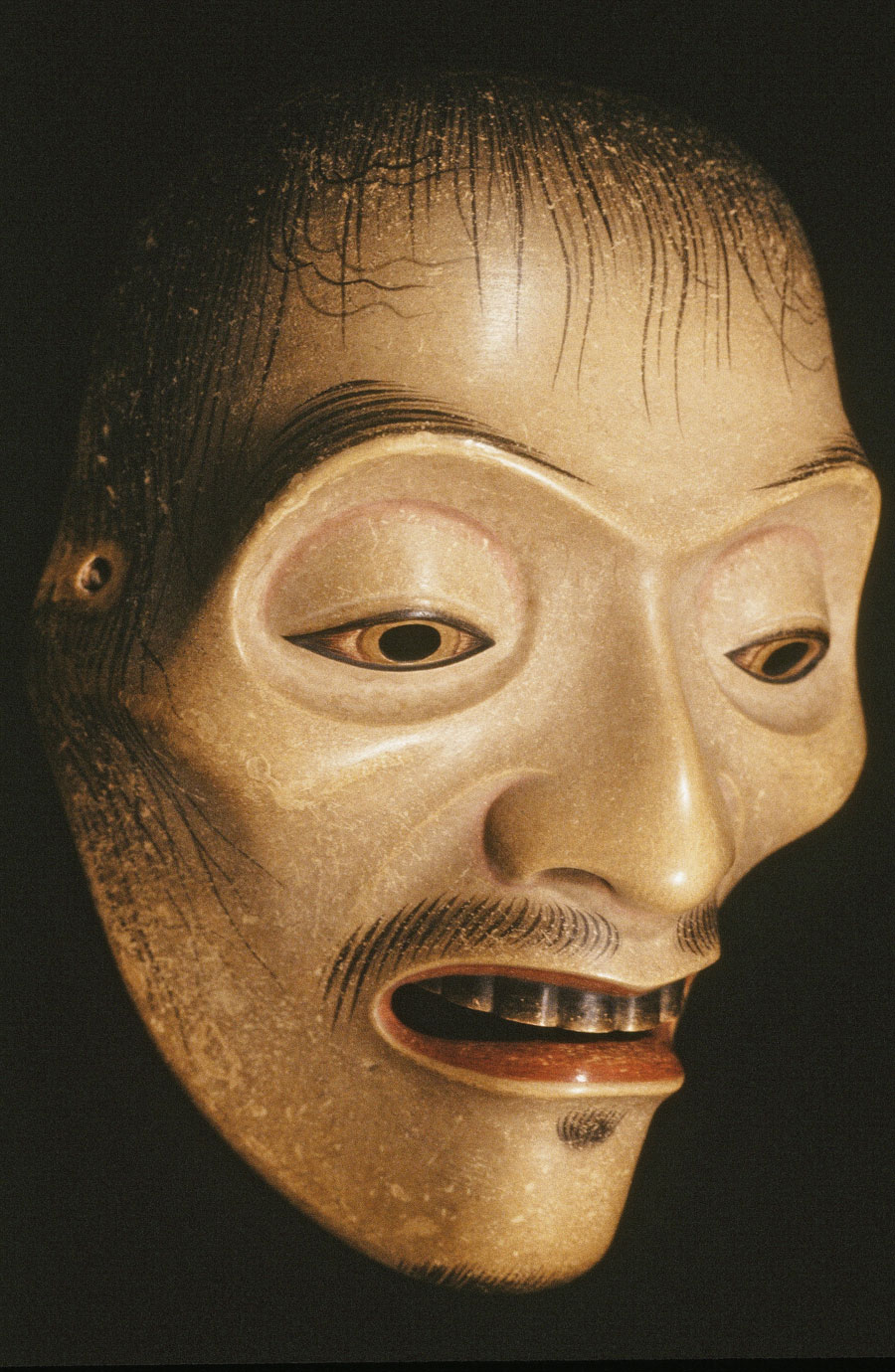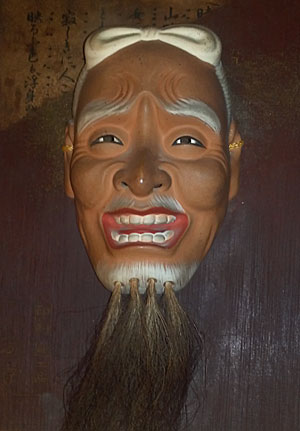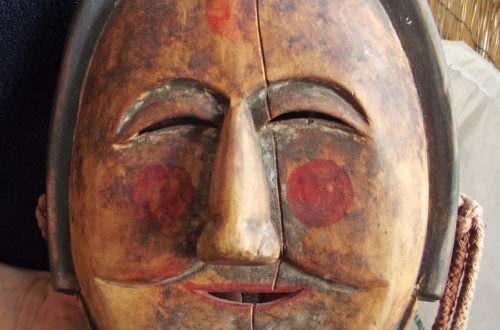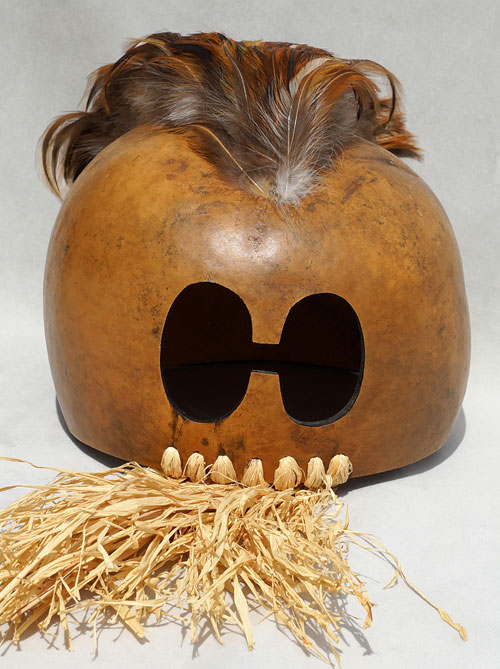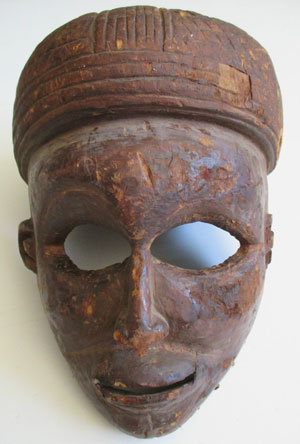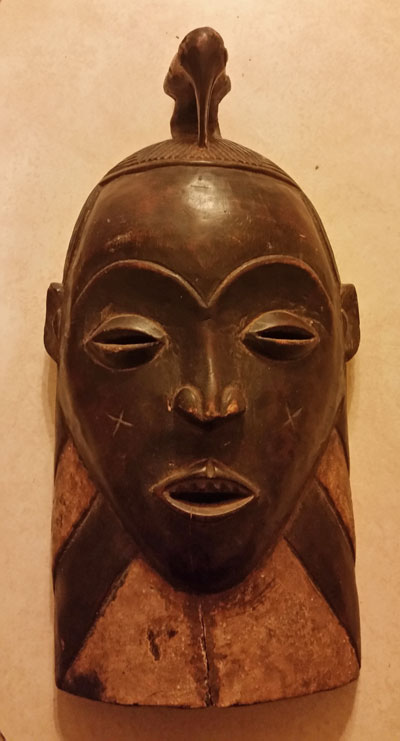Q: I bought 5 carved wooden masks from an estate sale in 2008 for about $10 each. I knew nothing about masks and didn’t receive any info about them when I purchased them. I just knew I really liked them. (The sale was like an indoor “yard sale” for an dear gentleman who died–had traveled a lot and collected a lot of art/objects from this travels. They all look old, none are ornate, none have any bright colors (natural colors, not much painting), 4 have faces roughly of this one’s shape but one has a round face with raffia bears.This mask’s size: about 13″ tall, 7″ wide, 5″ deep at…
-
-
One of my favorite masks… Chewa
As a long-time mask collector I’m going to occasionally blog about an ethnic group I am especially attracted to. Let’s start with the Chewa people of Malawi in East Africa. Their Nyau masks are different and come as a surprise every time. Though often quickly made, they are always a showpiece of creative art. The four shown here represent lesser characters in a dance. They a readily available and, even though authentic, can be bought for a affordable price. The Chewa have larger masks of gods and spirits which are rarely sold. Chewa masks are not popular with most collectors or museums. They are often omitted from collections and books.…
-
Eskimo small stone mask
Q: I found this stone mask in Barrow, Alaska, on the beach and I was wondering if you could help me identify it. It is five inches high. Mechelle, 1501 A: A small stone face found of the beach in Barrow (in the far north) would likely have been made by the Inupiaq people. It is too small to be a real mask. It could have been made by a shaman and placed in a kayak for protection or good luck. Lots of small stone sculptures are made by the Inupiaq for different purposes, the most common being sale to tourists. More information is needed to determine value.
-
Maiden mask from Korea
Q: I know you don’t choose more than a mask per person, but I have some doubt on this concubine Korean mask. It’s made of light wood and if you look at it from the front it seems to be old. She seems to have also a scar on her face maybe made to strengthen stage lights. But the rear makes me wonder. It looks new and has a red print. Could you please tell me something about it? Monica, 1509 A: Your mask is old and probably used briefly. It has been broken in half which will lower its value only a bit. Try to get a translation of…
-
Mardi Gras in Louisiana
Three days ago I wrote about the Mummers parade in Philadelphia. The other famous US masquerade spreads can be found in many parts of Louisiana. The big parade in New Orleans is a famous tourist event. The masks and costumes look a lot like the carnival in Venice. However, there are many smaller parades in the rural areas that are unique. Michael Welsh writes in Acadiana: “Wherever Mardi Gras is celebrated, the mask is key. Behind the best masks, they can’t tell whether you are laughing or crying. They can’t tell how absolutely drunk you are. The mask helps erase consequence. “Riders want folks to say, ‘Well, I didn’t see…
-
Mummers Parade in Philadelphia
Though I live close to Philly, I’ve never gone to this important masquerade. The masks and costumes are something everyone should experience. Better yet, the participants and audience (which includes tourists) are having a great time together. A lot of beer is consumed. New friends are made. Great fun! The Mummers Parade is held each New Year’s Day in Philadelphia, Pennsylvania. It is believed to be the oldest folk festival in the United States. Local clubs (usually called “New Years Associations”) compete in one of four categories (comics, fancies, string bands, and fancy brigades). They prepare elaborate costumes, performance routines, and moveable scenery, which take months to complete. This is…
-
African Lulua mask with holes
Lulua is an umbrella term which refers to a large number of peoples who populate the region near the Lulua River. It is in the Congo basin situated in the Democratic Republic of Congo. The people number 300,000 and live in small regional chiefdoms and in times of crisis elect a common leader. The role of the village chief is to insure juridical, political and social cohesion. The heterogeneous composition of the people and the considerable area they occupy, explain the many stylistic overlappings with their neighbors. The formal and functional diversity of the masks testifies to the region as an ethnic crossroads and sometimes makes it difficult to confirm…
-
Timorese mask
I’m posting this because I like it so much. Traditional masks that rely mostly on carving can result in very fine sculptures. There are examples of this in Africa and indigenous cultures around the world, but they are rare compared to masks with color or adornments. Timor is an island in the South Pacific under Sulawesi and the Moluccas. Half of the island is the eastern end of Indonesia. Masks and other tribal arts are still being made there. This one would be old and used for celebrating an ancestor or communicating with spirits. Full disclosure– I am an artist, not an anthropologist.
-
Japanese Noh mask
There are over 200 characters portrayed in the many Noh plays of Japan. This one could possibly be Ayakashi the supernatural man or Heida the warrior… maybe someone else. Regardless, it’s a very nice mask. All of the eyes in Noh masks stare blankly into space. The ambivalent corners of their mouths leave their moods utterly indiscernible. These wooden masks, used in an ancient form of Japanese theater, were made to be expressionless. But performers are charged with using slight and subtle movements to reveal the hidden emotions carved into each one. Dating back almost 1,000 years, Noh is a style of musical drama with plots ranging from Japanese legends…
-
Goli mask from West Africa
Q: My uncle bought this in Africa in 1969. Sadly, one horn is broken and has a metal staple holding it together. Not sure when it broke, probably years ago. It’s 17 by 10.5 inches. David, 1503 A: Goli masks from the Ivory Coast are a favorite of tourists and collectors. They never represent the ancestors and are always worn by men. Goli is the day-long spectacle that normally involves the whole village and includes the appearance of four pairs of masks, music played on special instruments, and, ideally, the joyous consumption of a great deal of palm wine. Goli can be performed both as an entertainment and for the…
